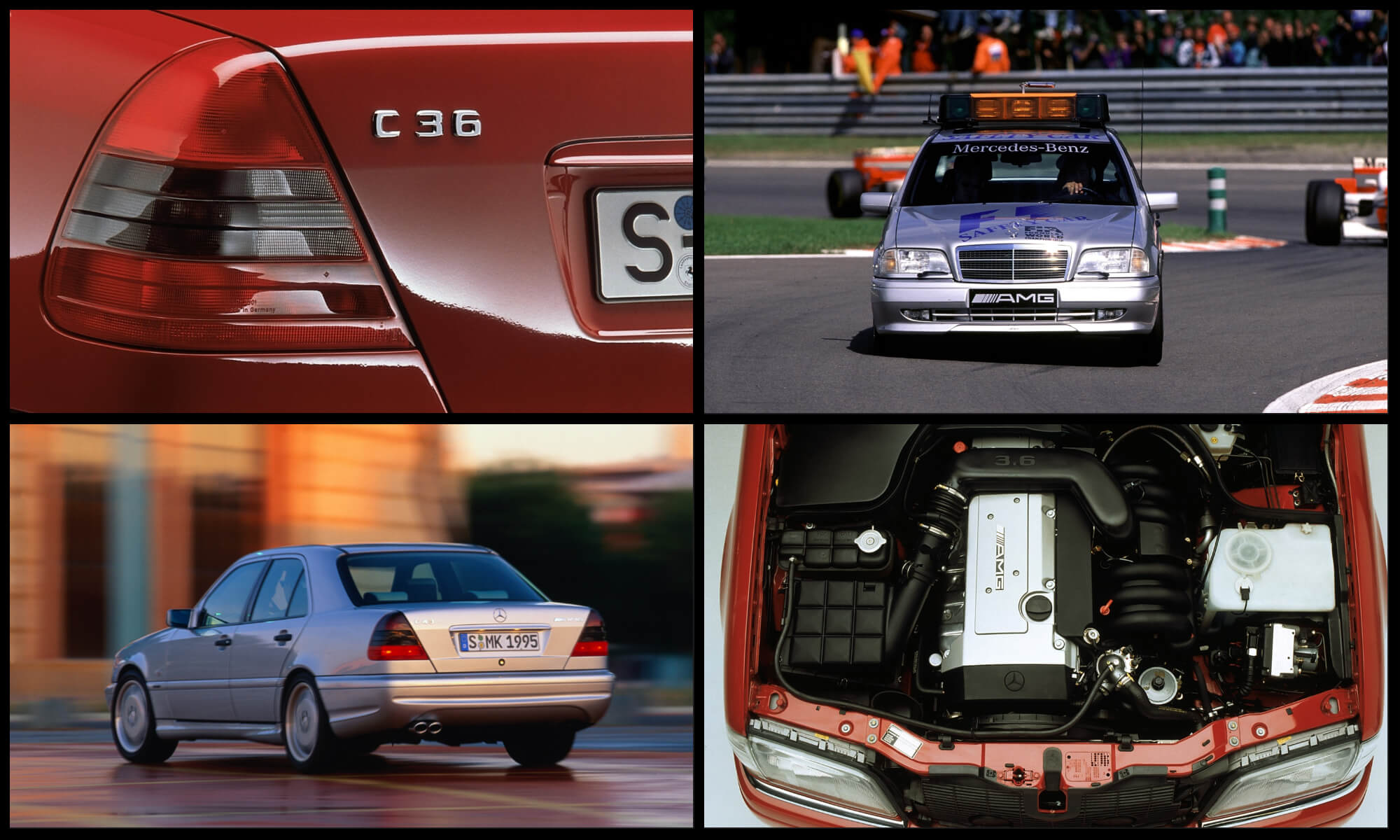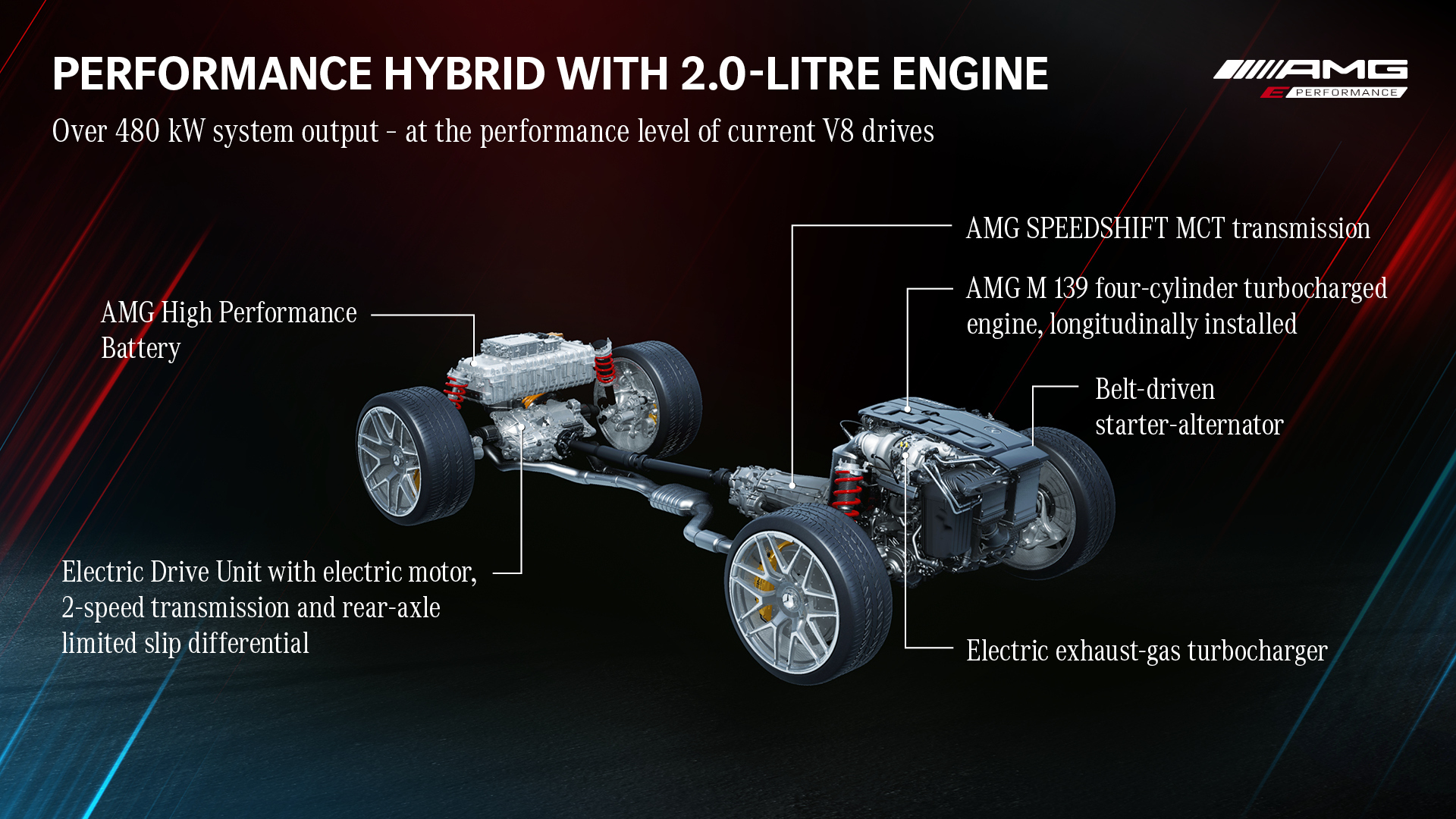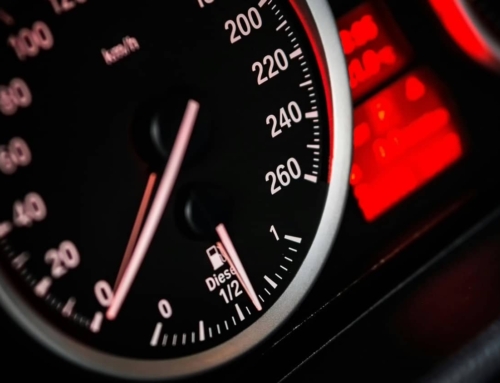Daniel Wamono is a new contributor to Double Apex. He is an automotive designer who loves all things related to the automotive world. Wamono will be sharing his unique perspective with us in various columns. He starts with a conundrum in his first submission: C-Class AMGs Dissected, where he wonders about Mercedes’ performance sedan.
News of the upcoming C63 forgoing a V8 for a smaller, electrically assisted, four-cylinder motor isn’t sitting well with automotive enthusiasts and I get it. AMG’s seemingly nonsensical decision caught me by surprise. I mean, what is the point of a C63 if it doesn’t come with a V8? It won’t have the characteristics we love and expect from an V8 AMG C-class. No more senseless speeds, obnoxious sounds and unnecessary wheel spins in a compact executive sedan. This made me sulk.
Once I finished sulking, I wondered if it mattered if the C-class AMG needed a V8 engine to be great and I believe history tells us yes… but also no. Mercedes introduced the first C-Class AMG in limited numbers in 1993. Incidentally, this was also the first car to be developed jointly by Mercedes-Benz and AMG.
Follow Double Apex on Facebook and Instagram, where we share more car content.
First of its kind
The C36 AMG was powered by a 3,6-litre straight six with 24 valves. This motor produced 206 kW and 385 N.m, which were impressive figures for its time. It was a magnificent car, at the very least good enough to be F1’s safety car for the 1996 season. Without a V8 under the bonnet, the C36 made potent power, had a great beefy engine noise and comfort levels surpassing its rivals. That sounds very AMG, right? Despite all of this, the contemporary BMW M3 outperformed it. This must have led the engineers at both AMG and Mercedes to drink.
Read our A45S driving review by clicking this link.
The First V8
What followed next was nothing short of crazy. In order to beat the BMW M3, engineers over at AMG shoehorned a 4,3-litre SOHC V8 engine into the shell of the then puny C-class. In 1997, the C43 AMG was born, also in limited numbers. The first V8 C-class was born and it made more power and torque than its straight-six predecessor 225 kW and 410 N.m, to be exact.
The C43 was set up so well that DTM variants had the same underlying setup as the road going AMG versions. It took what the C36 could do and pushed it further; what a car. Despite this, the C43 was still very much an AMG in the sense that it sounded brawny, made lots of power and was comfortable with accidentally (or on purpose) wheelspin around town. Clearly a result of drunken stupor. Despite all of this, the M3 still beat the C43. How good was the E36 M3 then?
Rarest of Them All
Can you imagine going through all of that engineering effort just to get beaten again? I would lose my mind. Which is what happened. The following year AMG engineers took the engine found in the C43 and enlarged it to 5,5 litres, just because they could, and they were probably still drunk.
By far the rarest of all W202 variants, the C55 AMG made a pretty crazy, for the time, 250 kW and 510 N.m. A true brute in a suit and arguably the most AMG of all the W202s in the sense of tyre killing capabilities. Unfortunately, the W202 doesn’t count as a successor to the C43 because they made so few (Only 59 were produced in total – Ed) and it was a special option for special Mercedes-AMG clients built by AMG’s manufaktur division.
Learn about Mercedes-AMG’s F1 derived One hypercar at this link.
A Step Back
Both W202 AMGs make such a substantial case for why C-class AMGs need to come with a V8. However when the W203 was introduced in 2000, something ‘shocking’ transpired. AMG ditched the V8 and went with a V6. The people at AMG had seemingly sobered up.
They created the C32 AMG. Its engine had a displacement of ‘just’ 3,2 litres and with the aid of a supercharger produced 260 kW and 450 N.m. Bigger isn’t always better and the C32 AMG encapsulated this by utterly trouncing its C43 AMG predecessor in pace and grace despite being heavier.
You may scoff at the V6 but its top end power, better weight distribution and improved aerodynamics gave it near supercar performance for its time. Even with its ‘puny’ V6, the C32 AMG was still very much an AMG in character. It was less focused in its sporting effort (when compared to the M3), but still a performance monster with relaxed handling and comfort. It also made a great sound too.
More V8s?
I’m sure when the C32 AMG was introduced, many thought that AMG was done with shoehorning V8 engines into compact sedans. But those many, including me, were wrong. Another shocking turn of events, the AMG personnel relapsed like seasoned booze-hounds. In 2004 they beat a newly developed naturally aspirated 5,4-litre V8 into the gut of the W203 to revive the C55 moniker. More refined than the C32 and with beefier noises, the C55 AMG was the most sports oriented C-class. Despite this increased focus on performance, it remained a comfortable car to drive daily.
Bucking The Trend
Since then, every C-class range had a V8 option until the most recent, W206 iteration. The latest will come with a hybrid four-cylinder featuring an F1 inspired turbocharger. So, why did they do it? Why did they break all of our hearts and opt for an electrified four-pot? Supply chain issues? Transfer of F1 tech to road cars?
Read more about the tech-laden W206 C63’s powertrain at this link.
The most likely answer is a reduction of emissions. Not that it will matter anyway, as no answer will calm the rage within all C63 lovers. Apart from the obvious noise limits, emission regulations and (more recent) supply chain issues we can speculate a few reasons the upcoming C63 AMG will be without V8.
Downsizing
Technology has improved significantly over the past decade, we don’t need V8 engines anymore to make silly power and torque. Full-blooded AMGs are very special things. Fitting that delicious V8 into every model will cause their more exclusive vehicles to become less special. Let’s not forget that AMG has halted the supply of the V8 and Aston Martin will fit a variant into its upcoming Valhalla sexy beast. Who in their right mind would spend close to a million dollars for a car with an engine that you can get in a C-class? Not me, that’s for sure.
Exciting Times
While many feel this is a poor decision, I can’t help but feel excited. For the first time in decades, we purchase a vehicle full of tech directly from F1, the pinnacle of motorsport. How amazing does that sound? Much better than the current M177 powered W205 AMG, I tell you. Its two turbochargers and restrictive exhaust create a noise that doesn’t sound like anything really, least of all a proper V8 AMG.
Back to the Fut… Beginning
This brings me back to my initial thought: does the C-class need an AMG V8 to be great? Not at all. Mercedes and AMG have created fantastic vehicles that prove otherwise. If the upcoming C-class makes wonderful power, produces a great sound, is more comfortable than its rivals, it will be a textbook AMG.
Although, there is something cool about a V8 C-class and how they make you feel. Every iteration of the C-class AMGs is an AMG in character. But having a V8 brings in something extra and I, like most AMG fans, will miss it.
What we’re losing in V8 buff-ness, presence and sound we’re gaining in (I hope) a race like peaky four cylinder coupled with the immediacy and immense torque from electricity. This concoction will create a new AMG experience firmly planted in tradition but with arms extending out towards the future and I cannot wait to experience it.








What a talented young designer. You will go a long way, no doubt.